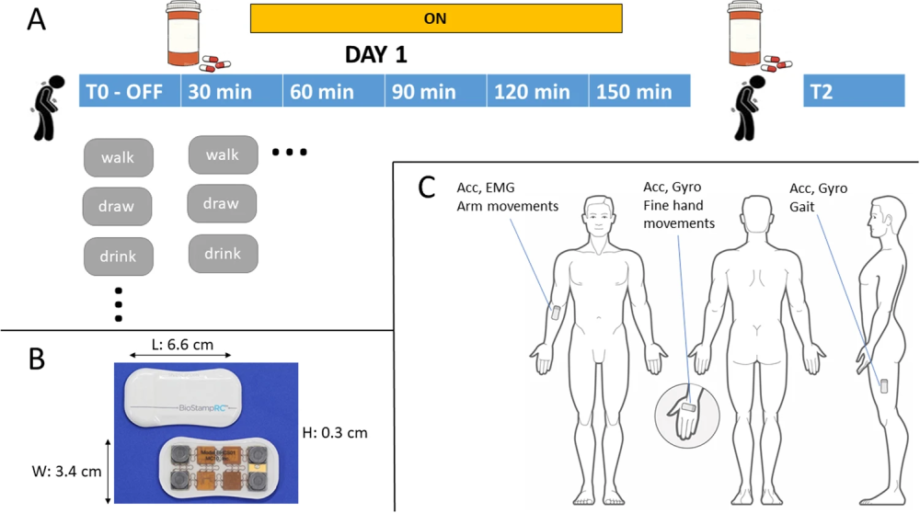Wearable devices have the potential to monitor motor symptoms in neurological disorders. By combining kinematic data with machine learning algorithms, we can accurately identify individuals with movement disorders and gauge the severity of their motor symptoms. Our study aimed to determine if wearable sensor data and machine learning algorithms, with automatic feature selection, can estimate the clinical rating scale and monitor the longitudinal progression of motor symptoms in people with Parkinson’s Disease.
Seventy-four patients visited our lab seven times at three-month intervals. We recorded their two-minute walking and 30-second eyes-closed postural sway using six Inertial Measurement Unit sensors. We employed Simple Linear Regression and Random Forest algorithms along with various automatic feature selection methods, resulting in seven distinct machine learning models to estimate the clinical rating scale (Movement Disorder Society- Unified Parkinson’s Disease Rating Scale part III; MDS-UPDRS-III).
Our findings revealed that 29 features exhibited significant progression over time at the group level. Among the seven models, the Random Forest model provided the most accurate estimation of the MDS-UPDRS-III. Interestingly, our model detected a statistically significant progression of motor symptoms within 15 months compared to the first visit, while the MDS-UPDRS-III did not register any changes.
In summary, wearable sensors and machine learning excel in tracking the progression of motor symptoms in people with Parkinson’s Disease compared to conventional clinical rating scales. The methods outlined in this study can complement these scales, enhancing diagnostic and prognostic accuracy.
Source Nature

